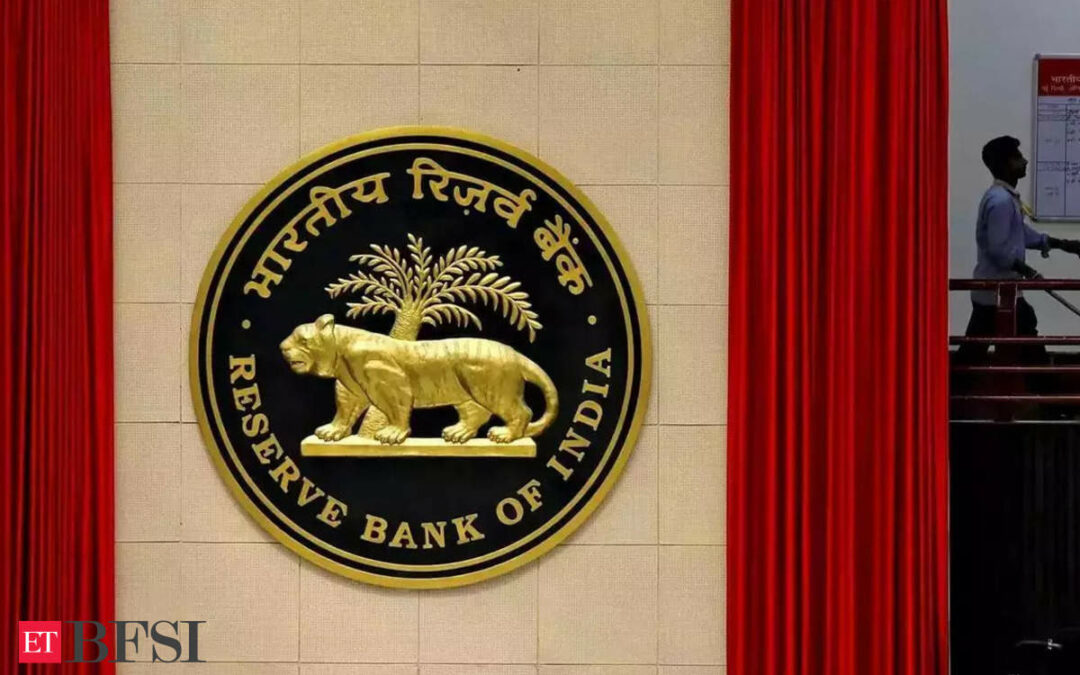NEW DELHI: The Reserve Bank of India will likely keep interest rates unchanged Friday, with chances of an early cut fading after the government warned of a coming heatwave and the economy grew faster than expected.
The central bank will likely keep its benchmark repurchase rate at 6.5% for a seventh straight policy meeting, according to all 39 economists surveyed by Bloomberg. Only three of 23 analysts expect the central bank to change its hawkish policy stance to neutral.
The timing of any easing has been complicated though by the threat of rising food prices and signs of strong demand in an economy growing close to 8%. RBI Governor Shaktikanta Das has said he wouldn’t consider easing until inflation settles around the 4% target on a sustainable basis, reducing the chances of an early cut.
The RBI is likely to keep its rate unchanged, “retain the monetary policy stance of ‘withdrawal of accommodation’, sound optimistic on growth, and continue to reiterate the commitment to the 4% headline inflation target,” Santanu Sengupta, Goldman Sachs Group Inc.’s India economist, wrote in a recent note.
Some economists have pushed back their forecasts for rate cuts to later in the year. Morgan Stanley now expects the easing cycle to begin by October instead of June given India’s better-than-expected growth. Teresa John, an economist at Nirmal Bang Equities Pvt., pushed out her rate cut call too, citing concerns that heatwaves will keep inflation high.
The RBI is trying to rein in inflation while still keeping monetary policy supportive enough for the economy, implying rates will remain stable for now. Prime Minister Narendra Modi, who’s seeking a third term in office in elections starting in two weeks time, said April 1 that growth should be the central bank’s top priority over the next decade.
The possibility of the US Federal Reserve delaying its rate cuts also gives the RBI a breather. Like other emerging market central banks, the RBI tends to track Fed policy in order to keep its currency stable.
What Bloomberg Economics says
The RBI’s approach “is more hawkish than warranted. The economy needs stimulus. Growth is slowing. Food prices are set to slow sharply toward year-end as falling agricultural costs show up in retail prices. Surging FX reserves mean the RBI needn’t wait for the Fed,” Abhishek Gupta, Bloomberg Economics
Here’s what to watch from the policy statement, which will be delivered by Das at 10 am in Mumbai on Friday:
Inflation risks
The consumer price index rose 5.09% in February from a year earlier, well above the RBI’s target, largely due to higher food prices. The core measure, which strips out volatile food and fuel costs, has tumbled though, implying there’s little demand-push inflation in the economy.
The voting pattern of the six MPC members will be closely watched too. Jayanth Varma, an external committee member, was the only one calling for a rate cut in the February meeting. If others join him this week or vote for a change to the policy stance, that may be a sign the RBI is ready to pivot to rate cuts.
Policy stance
The RBI has maintained its hawkish stance of “withdrawal of accommodation” since June 2022. Some economists say there’s a chance it may shift to a neutral stance now that core inflation is easing, consumer spending in some sectors is soft and the government is reining in its fiscal deficit.
“There is a small likelihood” of the stance being changed to neutral, “but if that happens, it will be a positive surprise for the market,” wrote Deutsche Bank AG’s India economist, Kaushik Das, in a note.
Markets and Liquidity
India’s bonds have benefited from a gush of foreign inflows ahead of the inclusion in global bond indexes and lower-than-expected government supply. The yield on the benchmark 10-year bond is down about 5 basis points this year while similar tenor US yields are up about 50 basis points.
In the absence of any rate action, traders will keep a close watch on the central bank’s views regarding liquidity in the market. The RBI has become more nimble in its liquidity management, adding and removing liquidity to align the weighted average call rate to the policy repurchase rate.
“RBI is expected to touch upon smoothening of liquidity conditions,” said Parijat Agrawal, head of fixed income at Union Mutual Fund. “Systemic liquidity shall improve going ahead.”











